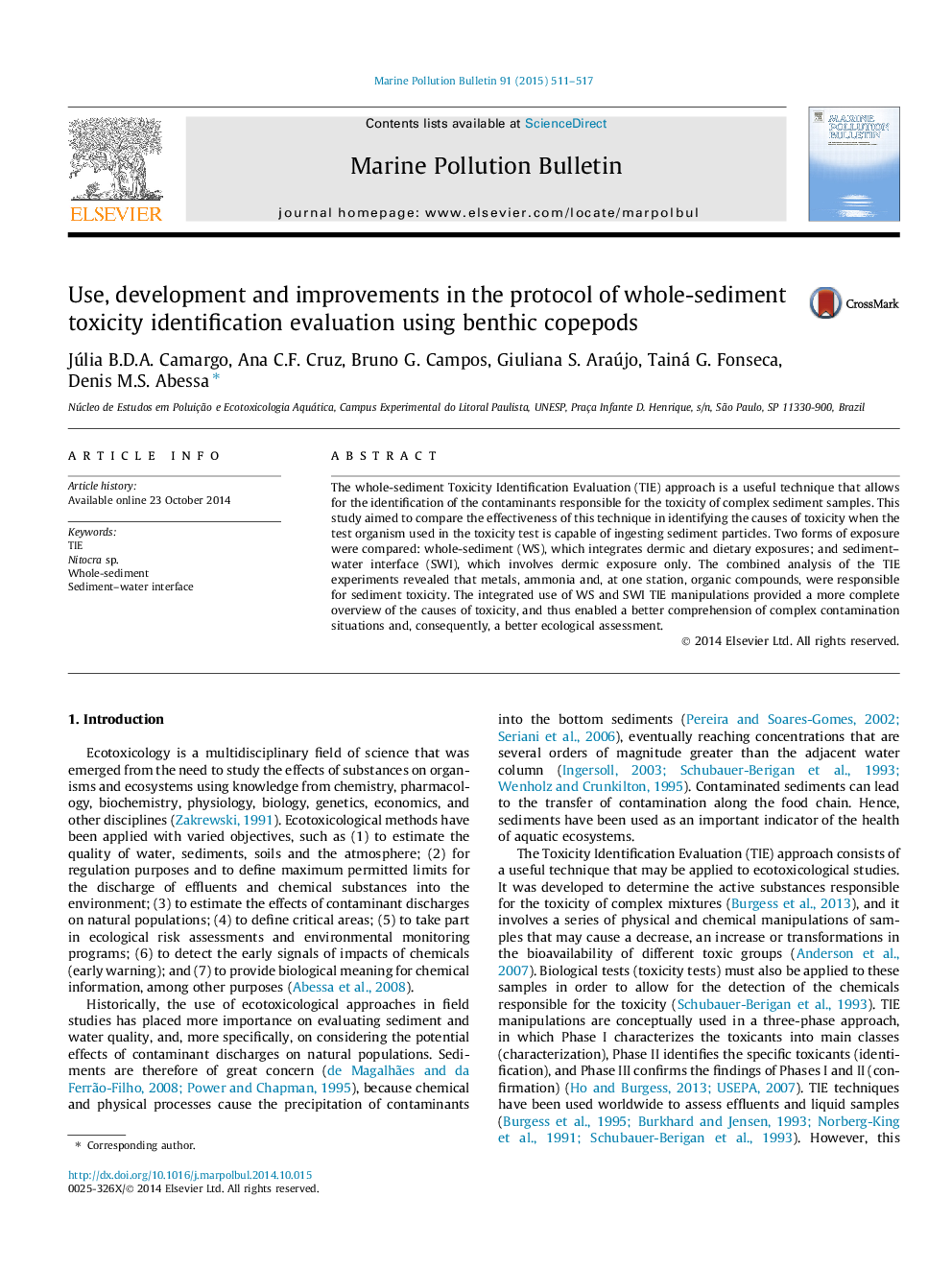| Article ID | Journal | Published Year | Pages | File Type |
|---|---|---|---|---|
| 4476751 | Marine Pollution Bulletin | 2015 | 7 Pages |
•When global exposure routes are considered, TIE results may be not very clear.•Water exposure alone allowed a clearer identification of chemicals related to toxicity.•Assessing different exposure routes by sediment TIE may better address the causes of toxicity.
The whole-sediment Toxicity Identification Evaluation (TIE) approach is a useful technique that allows for the identification of the contaminants responsible for the toxicity of complex sediment samples. This study aimed to compare the effectiveness of this technique in identifying the causes of toxicity when the test organism used in the toxicity test is capable of ingesting sediment particles. Two forms of exposure were compared: whole-sediment (WS), which integrates dermic and dietary exposures; and sediment–water interface (SWI), which involves dermic exposure only. The combined analysis of the TIE experiments revealed that metals, ammonia and, at one station, organic compounds, were responsible for sediment toxicity. The integrated use of WS and SWI TIE manipulations provided a more complete overview of the causes of toxicity, and thus enabled a better comprehension of complex contamination situations and, consequently, a better ecological assessment.
